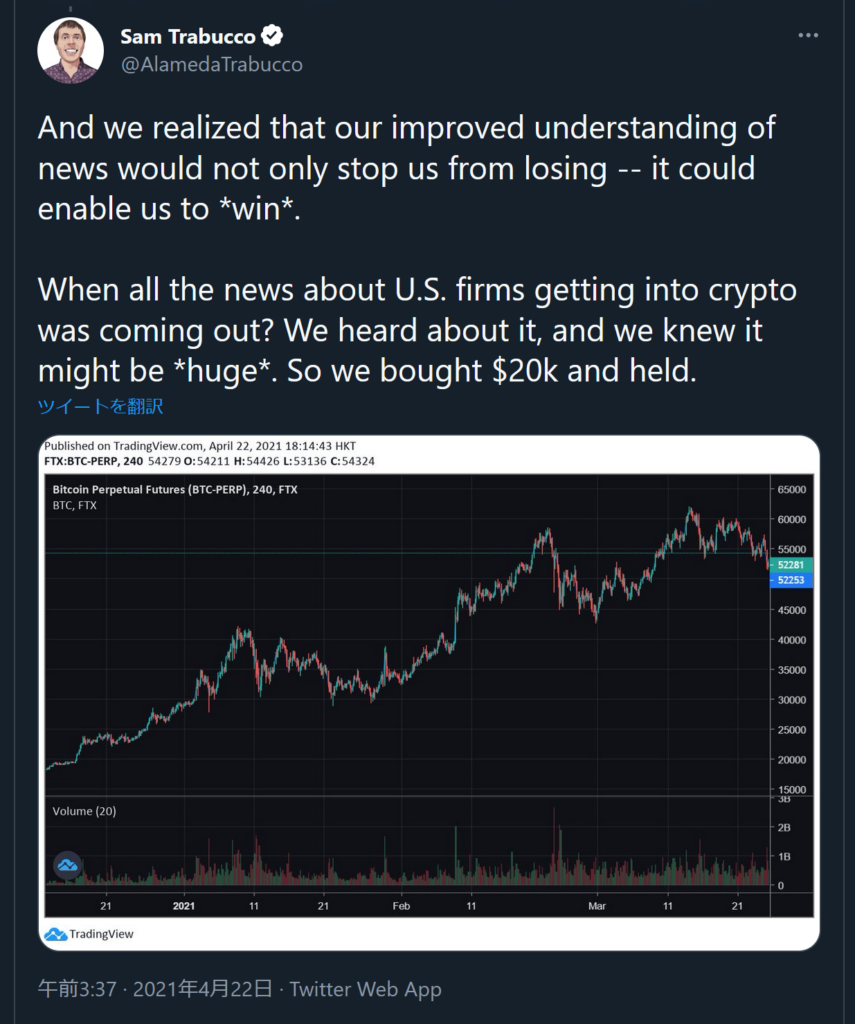The Next Warren Buffet? Nah, I don't think so
The overall picture is clearーwe have enough potential sources of losses that even if some of the numbers are off here and there, it is now at least conceivable how they might have arrived at such staggering losses.

Oh, boy! Crypto is (once again) moving with the volatility of the British pound.
By now, you have probably heard of the wipeout of FTX and their founder Sam Bankman-Fried.

Truly Breathtaking
Capital Thinking • Issue #1150 • View online
In case the guy’s name wasn’t enough reason to give you pause (bankman fried?), Fortune tried to warn you back in August.

And guess who else got fried as FTX collapsed? The Ontario Teachers Pension Plan. Yes, really! Turns out they invested in FTX earlier this year at a — get this — $32 billion valuation.

Oops, sorry Grandma! Call us old fashioned, but we thought pension funds were meant to be conservative.
We live in a clown world where the empty suits that run these things are more concerned with ensuring they don’t get cancelled for buying something that’s deemed “ESG unfriendly.” For example, these muppets are deathly afraid of coal or oil and gas companies (more on that in a second). Meanwhile, crypto Ponzis clearly must be ESG compliant. And we’re not even exaggerating…

Truly breathtaking!
WHAT $32 BILLION GETS YOU…
Staying on the topic of FTX and their former $32 billion valuation…
We were chatting about this at Capitalist Exploits HQ, our head trader, Brad, made an interesting comment. It highlights things perfectly:
$32bn could have bought you all the listed offshore oil drillers and OSV [offshore supply vessels] operators — every single one plus a shit load of change! what farken morons!
Yeah, we’ll stick with buying “toxic” energy stocks over here.

For a Much Deeper Dive into the FTX/Alemeda Research Mess
What happened at Alameda Research
Milky Eggs.com:
If you want to read a poorly researched fluff piece about Sam Bankman-Fried, feel free to go to the New York Times (PDF).
If you want to understand what happened at Alameda Research and how Sam Bankman-Fried (SBF), Sam Trabucco, and Caroline Ellison incinerated over $20 billion dollars of fund profits and FTX user deposits, read this article. (And follow me on Twitter at @0xfbifemboy!)
To be clear, we still don’t have a perfect understanding of what exactly happened at Alameda Research and FTX. However, at this point, I feel that we have enough information to get a grasp on the broad strokes.
Through a combination of Twitter users’ investigations, forum anecdotes, and official news releases, the history of these two intertwined companies becomes progressively less hazy, slowly coalescing into something resembling a consistent narrative.
Of course, without witness testimonies and a full financial investigation, our claims only remain tentative at best. Any given piece of information may be flawed or even fabricated.
However, if they are assembled together and put in context, they together lend credence to the following timeline:
- SBF, Trabucco, and Caroline were (probably) initially well-intentioned but not especially competent at running a trading firm
- Alameda Research made large amounts of book profits via leveraged longs and illiquid equity deals in the 2020-2021 bull market
- Although Alameda was likely initially profitable as a market maker, their edge eventually degraded and their systems became unprofitable
- Despite success with some discretionary positions, on net, Alameda & FTX jointly continued to lose large amounts of money and liquid cash throughout 2021-2022 as a result of excessive discretionary spending, illiquid venture investments, uncompetitive market-making strategies, risky lending practices, lackluster internal accounting, and general deficiencies in overall organizational ability
- When loans were recalled in early 2022, an emergency decision was made to use FTX users’ deposits to repay creditors
- This repayment spurred on increasingly erratic behavior and unprofitable gambling, eventually resulting in total insolvency
Details follow below. (Many thanks to all those who have contributed to this article, be it through private discussions or through public content that I’ve quoted or otherwise relied upon.)
Alameda Research probably lost >$15 billion dollars
To understand the FTX bankruptcy, we have to first understand the scope of the problem at hand. Most news accounts seem to portray the scale of the bankruptcy as relatively small. For example, the New York Times suggests that user deposits were used to make up for money that had gone into venture investments:
Meanwhile, at a meeting with Alameda employees on Wednesday, Ms. Ellison explained what had caused the collapse, according to a person familiar with the matter. Her voice shaking, she apologized, saying she had let the group down. Over recent months, she said, Alameda had taken out loans and used the money to make venture capital investments, among other expenditures.
Around the time the crypto market crashed this spring, Ms. Ellison explained, lenders moved to recall those loans, the person familiar with the meeting said. But the funds that Alameda had spent were no longer easily available, so the company used FTX customer funds to make the payments. Besides her and Mr. Bankman-Fried, she said, two other people knew about the arrangement: Mr. Singh and Mr. Wang.
Similarly, Matt Levine’s column seems to imply that the drop in the value of FTT used as collateral resulted in an enormous imbalance between assets and liabilities:
Now let’s add one more crypto element. If you are a crypto exchange, you might issue your own crypto token. FTX issues a token called FTT. The attributes of this token are, like, it entitles you to some discounts and stuff, but the main attribute is that FTX periodically uses a portion of its profits to buy back FTT tokens. This makes FTT kind of like stock in FTX: The higher FTX’s profits are, the higher the price of FTT will be. It is not actually stock in FTX — in fact FTX is a company and has stock and venture capitalists bought it, etc. — but it is a lot like stock in FTX. FTT is a bet on FTX’s future profits.
But it is also a crypto token, which means that a customer can come to you and post $100 worth of FTT as collateral and borrow $50 worth of Bitcoin, or dollars, or whatever, against that collateral, just as they would with any other token. Or something; you might set the margin requirements higher or lower, letting customers borrow 25% or 50% or 95% of the value of their FTT token collateral.
Both of these accounts miss a crucial part of the story. First, FTX is missing about $8 billion dollars’ worth of users’ collateral.
Even if you consider the sum total of venture investments made by FTX and Alameda together, as well as a marginal drop in collateral value as a result of an FTT price decline, it simply does not make sense for FTX to be $8b in debt. The losses would be significant, yes, but they alone do not constitute a sufficient explanation for FTX’s bankruptcy.
In addition to that, it was popularly believed that FTX and Alameda together were enormously profitable, as a result of:
- High trading fees on FTX combined with large user trading volumes
- Extremely lucrative (or, depending on your perspective, predatory) venture deals for tokens such as SOL, MAPS, OXY, SRM, etc.
- Highly probable collusion between Alameda and FTX to give Alameda an edge over other market makers on FTX
Although it is difficult to put an exact dollar value to their estimated profits, it was believed that these avenues, especially the lucrative venture deals, were responsible for at least $10b in profit between Alameda and FTX combined.
We are therefore left with an even greater mystery.
Somehow, it seems as though Alameda and FTX managed to burn through >$15 billion dollars’ worth of profits (likely more). This is an incredible shortfall, and, remarkably, no comprehensive account to date has emerged showing exactly how this came about!
We may never really know where all of the money went. However, we provide a number of separate hypotheses which, if combined together, could plausibly account for losses of $15 billion or more.

